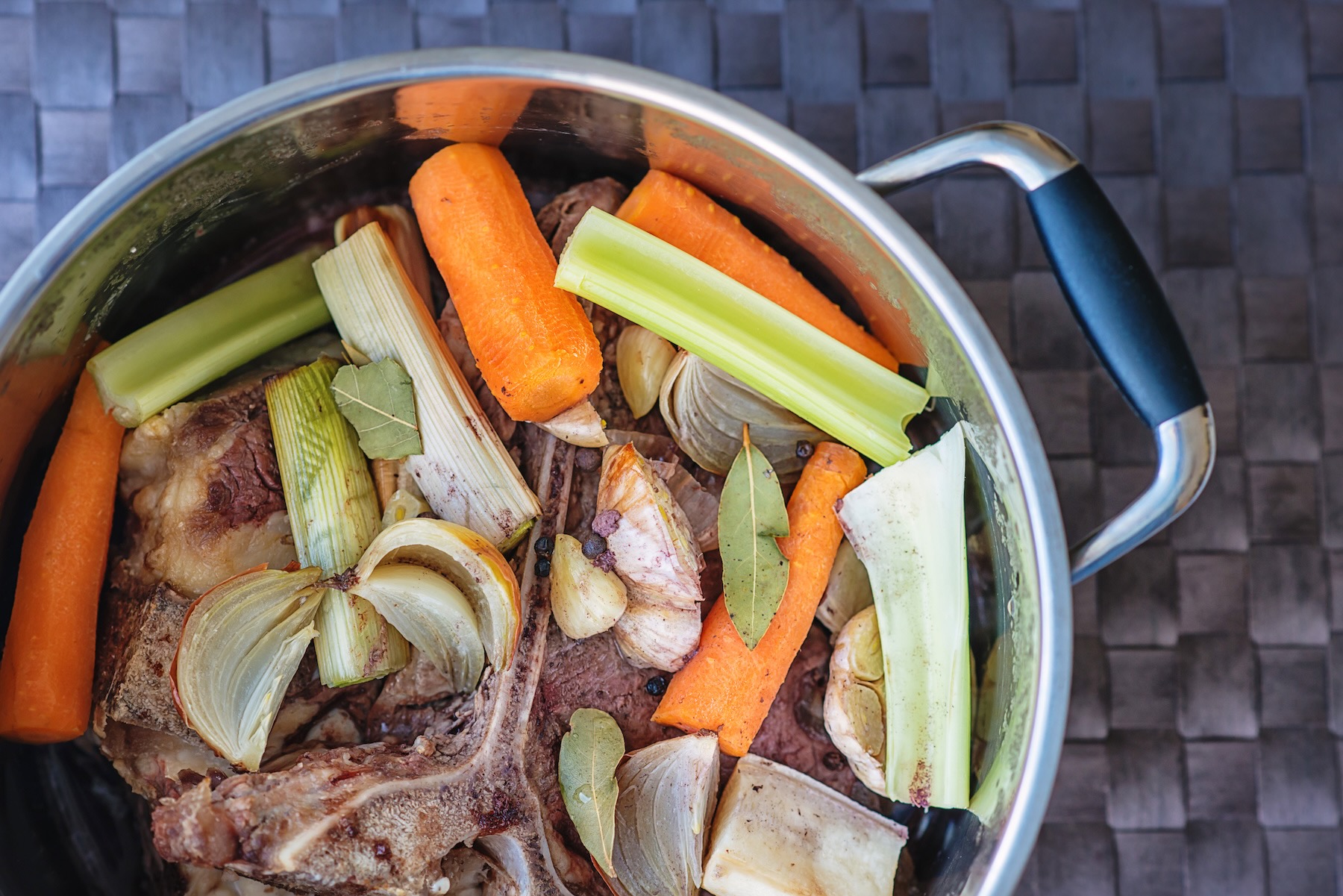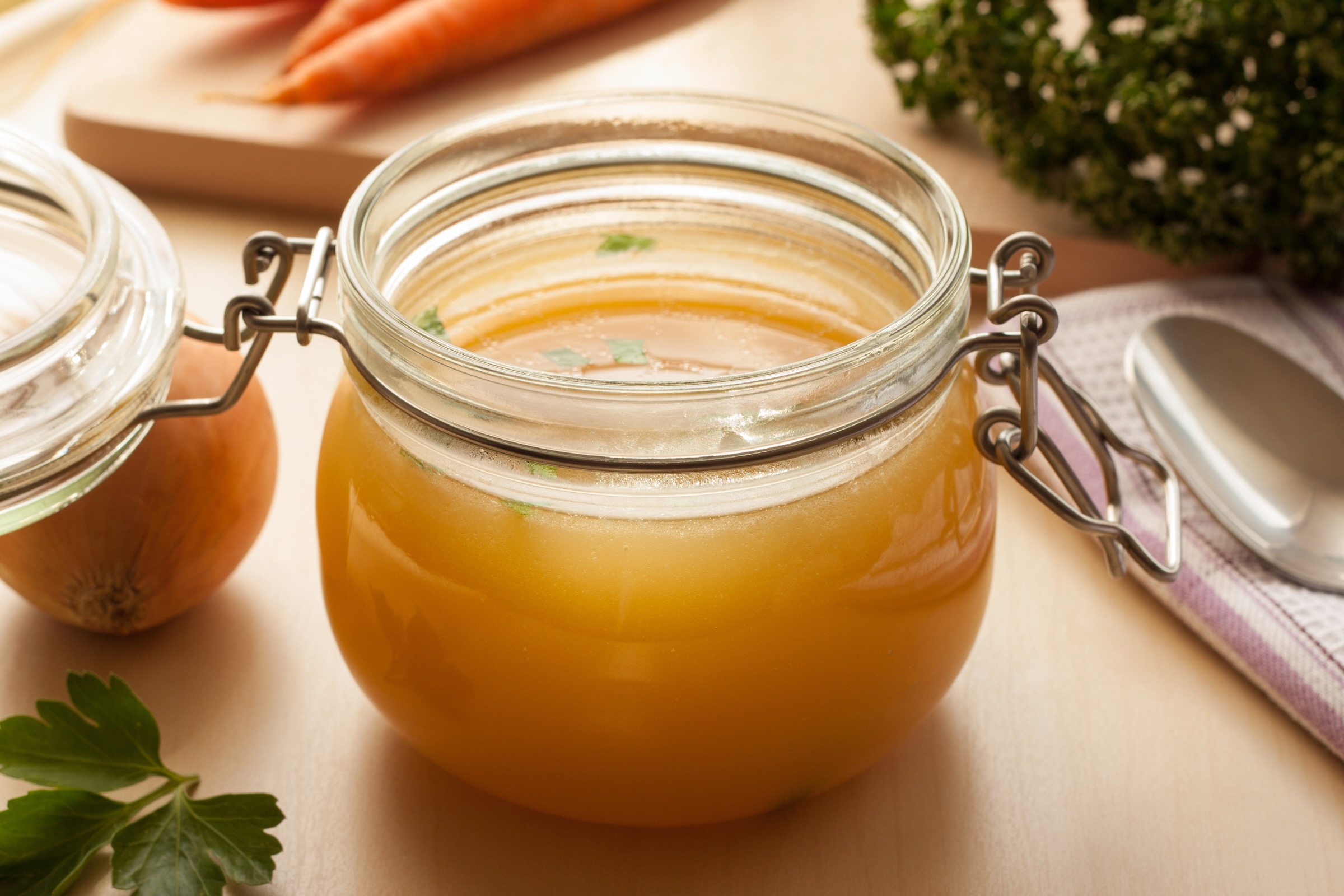All Your Bone Broth Questions, Answered

Bone broth has been gaining popularity in recent years, and for good reason. It’s full of readily absorbable protein, vitamins, and minerals,
That’s why the majority of shefs make their own bone broths to use in their recipes. Especially in recipes that use a lot of liquid, like soups, stews, and sauces, it makes such a big difference in terms of taste. I’d argue that the quality of stock or broth makes more of a difference than any other ingredient. Before we dive into the many benefits that bone broth has to offer, let me give you a quick overview of this superfood ingredient:

How Do You Make Bone Broth?
Bone broth is made by slowly simmering the bones of an animal along with other aromatics (vegetables and herbs) in water. During that time, the nutrients and flavor compounds from the meat and bones are extracted into the water, fortifying it.
Although bone broth is very similar to stock and broth in taste and preparation, there are slight nuances. Stock is made from bones, and broth is made from meat, with or without bones. Bones contain collagen, which thickens stock and gives it a more gelatinous consistency compared to broth. Broth, on the other hand, is simmered for a shorter time and tends to be thinner.
Bone broth is a type of stock since it is made primarily from animal bones. What makes bone broth different is the extra-long cooking time. While stock usually simmers for about 6 hours, bone broth is often cooked for 24 hours or more to fully extract all those nutrients.

Why Homemade Bone Broth is Healthier than Store-bought
While store-bought stocks and broths aren’t always artificial, they are processed and rely on additives and shortcuts to try to mimic the flavor of a homemade stock.
Using homemade bone broth instead, you’re largely avoiding or limiting these ingredients:
- Sodium – while sodium isn’t always a harmful ingredient, high levels in your diet can lead to high blood pressure and heart disease. And store-bought stocks contain a LOT of sodium. Even low-sodium varieties are often higher in sodium than homemade bone broth.
- MSG – monosodium glutamate is a savory compound used to enhance flavor. While it hasn’t been unanimously proven harmful, you’re probably better off limiting it as an additive in your diet.
- Preservatives – shelf-stable products contain preservatives to keep them from spoiling over long periods of time. Some studies show certain artificial preservatives may lead to cancer or other health problems when consumed in significant amounts.
- Artificial coloring and flavor extracts – many bone broth products on the market contain filler proteins and extracts to make up for a lack of flavor from shortcut processes.
In addition to avoiding potentially harmful ingredients, bone broth also contains many healthful elements that correlate with positive health benefits. Here are a few examples:
- Collagen – animal bones are high in collagen, a protein known for its anti-aging qualities. Collagen is made up of 19 different amino acids that offer a variety of health benefits.
- Glutamine – one of the amino acids that make up collagen which has been shown to boost your digestive and immune systems.
- Proline – an amino acid that promotes skin and joint health.
- Glycine – another amino acid that helps support healthy sleep and mental cycles.
We’ve covered just 3 here, but all 19 amino acids found in bone broth have their own unique health benefits to offer. While store-bought bone broth also contains some level of these nutrients, they’re much more abundant in homemade versions.
Why Homemade Bone Broth Tastes Better than Store-bought
In addition to the countless health benefits, homemade bone broth really does taste a lot better than store-bought. You can usually tell just by sight—homemade bone broth is a deeper color and is slightly thicker. It’s also noticeably richer in taste and has a fuller, rounder mouth feel.
The reason homemade bone broth is slightly thicker and more viscous is that it has a higher concentration of gelatin, a form of collagen. When homemade bone broth is reduced, it thickens considerably, making a flavorful base for many sauces and gravies. Store-bought broth, on the other hand, becomes salty and doesn’t thicken much when reduced. This is why stews are usually thicker in consistency.
Since broth or stock makes up such a significant portion of liquid-based soups and stews, using homemade versions makes a huge difference in flavor! It’s one of the reasons it’s hard to mimic your favorite restaurant dishes at home—restaurants usually make stock from scratch. And it makes a noticeable difference in the final dish.
All in all, making your own bone broth isn’t difficult, but it does take time. Luckily for you, you can get all the benefits of bone broth by ordering meals through Shef. It’s more efficient to make in big batches, so shefs are constantly making large quantities of bone broth to use in a number of recipes.








